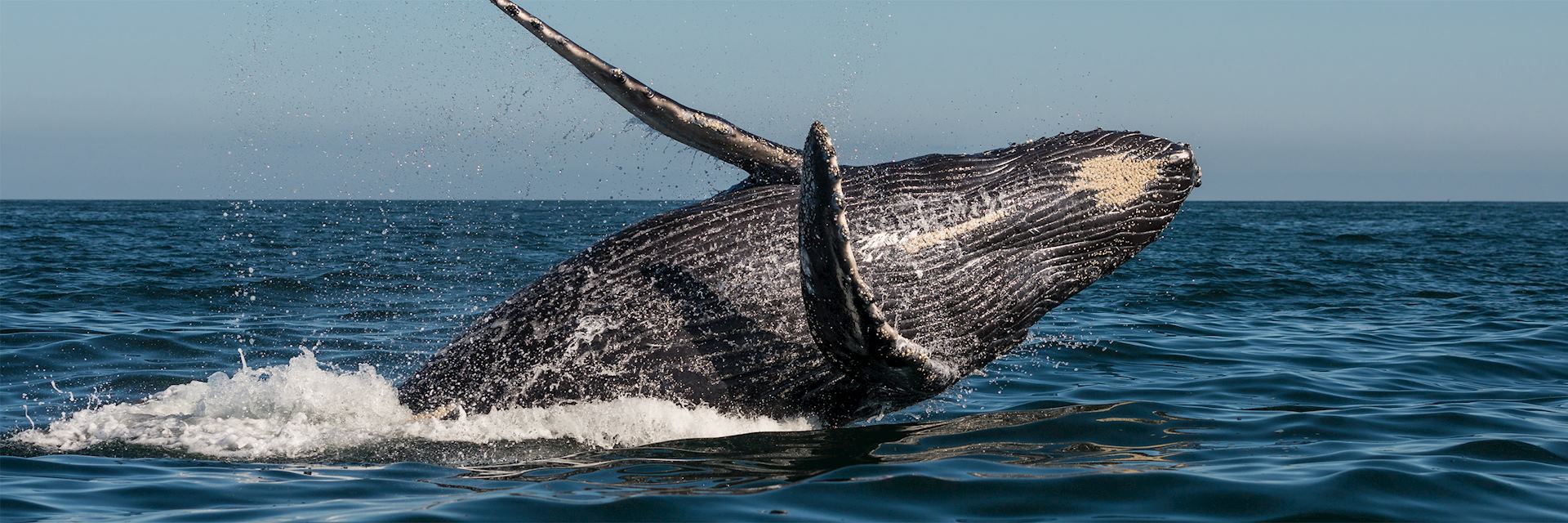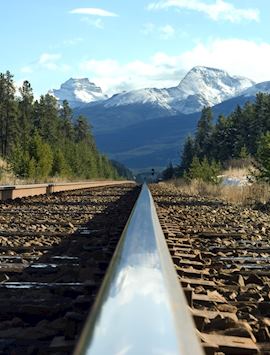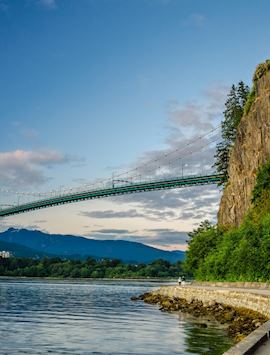By Canada specialist Kayleigh
I always relish the task of putting together a family holiday to Canada, simply because there are so many ideas to choose from. Safe, accessible and filled to the brim with things to see and do, Canada is a well-matched destination for any family with an affinity for the great outdoors.
While the country’s gigantic size makes it impossible to experience everything in one trip, the ease of self-driving means you can visit areas that most interest you. That might take you on a helicopter ride over Niagara Falls, walking on a glacier amid the soaring landscape of the Canadian Rockies, or searching for whales and bears around Vancouver Island.
Getting around in Canada
Self-driving is definitely your best option. I found the roads easy to navigate with straightforward grid systems in towns and cities.
Visiting for at least two weeks gives you time to break up lengthy journeys and spend longer in each place. It’s a good idea to explore a smaller area in a loop rather than trying to fit in places that are spread out. Alternatively, you could travel long distances by train.
Recommended experiences for families in western Canada
Family holidays in Vancouver
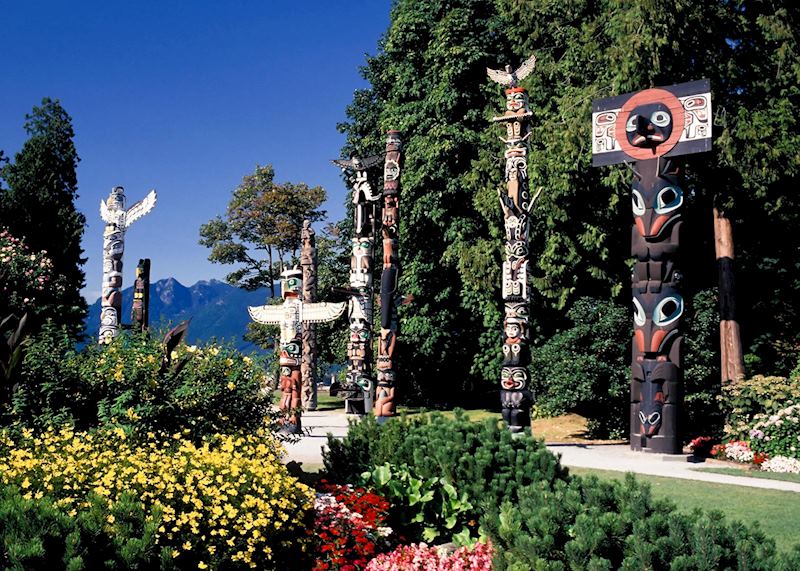
Like most cities, Vancouver offers a spectrum of activities for all ages. As the city is relatively compact, it’s easy to cover off most of its attractions in a few days.
Walking and cycling are both viable ways to get around, but I also suggest taking the hop-on, hop-off Vancouver Trolley Bus. Styled on the traditional trams found in San Francisco, the service runs every 20 minutes along a circular route connecting 33 stops, including Canada Place and Chinatown. An on-board narration tells you about the city’s history and landmarks.
Cycling in Stanley Park
Set on a jut of land surrounded by the waters of English Bay and Vancouver Harbour, Stanley Park is laced with scenic bicycle trails that weave through temperate rainforest and along the waterfront. You can explore these routes independently, but I recommend joining a guided cycle ride.
On a three-hour cycle tour, your guide tells you about the park’s biodiversity and history, which spans over a century. You also learn about the coast’s Salish (First Nations) people, as you stop at the collection of nine totem poles at Brockton Point, the park’s easterly extreme. These replica totem poles were brought to the park from across British Columbia (the originals are now in museums).
The ride takes a relaxed pace, with plenty of stops to enjoy the park’s scenery and its views of the city, the North Shore, English Bay and Lion’s Gate Bridge.
Canada in 4D
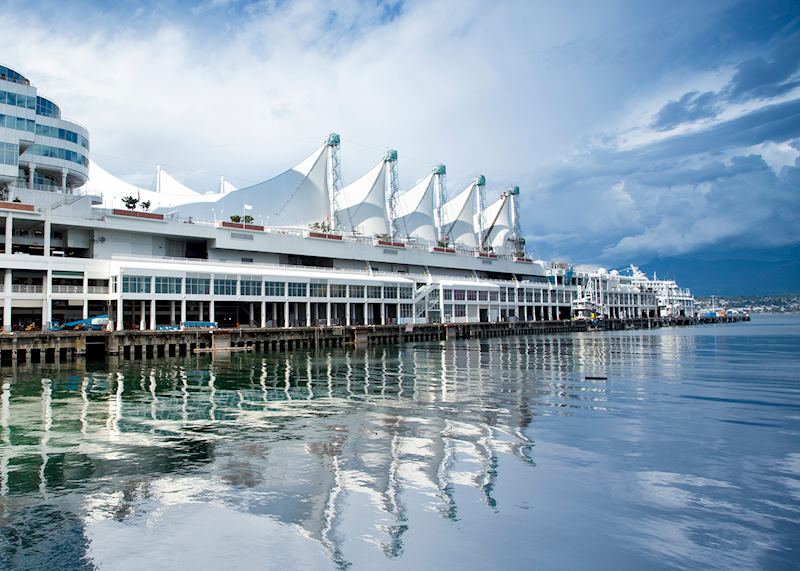
Housed in Canada Place on the harbour front, the FlyOver Canada experience uses 4D technology to immerse you in the country’s varied land and seascapes.
During the nine-minute virtual ‘flight’, you sit in a suspended chair in front of a screen the height of a four-floor building. As you watch bird’s-eye footage from across Canada, your seat moves with the camera. This, plus special effects like wind, mist and smells, creates the impression you’re flying over the country from east to west. I particularly enjoyed the feeling of flying over Toronto’s cityscape, Niagara Falls and Iceberg Alley (off Newfoundland’s coast).
Capilano Suspension Bridge Park
Set in an ancient temperate rainforest, Capilano Suspension Bridge Park’s bridges and suspended walkways form a maze through the treetops.
The main suspension bridge, originally constructed in 1889, hangs 70 m (230 ft) above the Capilano River. Walking across its 137 m (450 ft) length, you’re surrounded by Douglas firs and huge red cedars. The bridge’s high metal sides make it safe, although I’d advise holding small children by the hand.
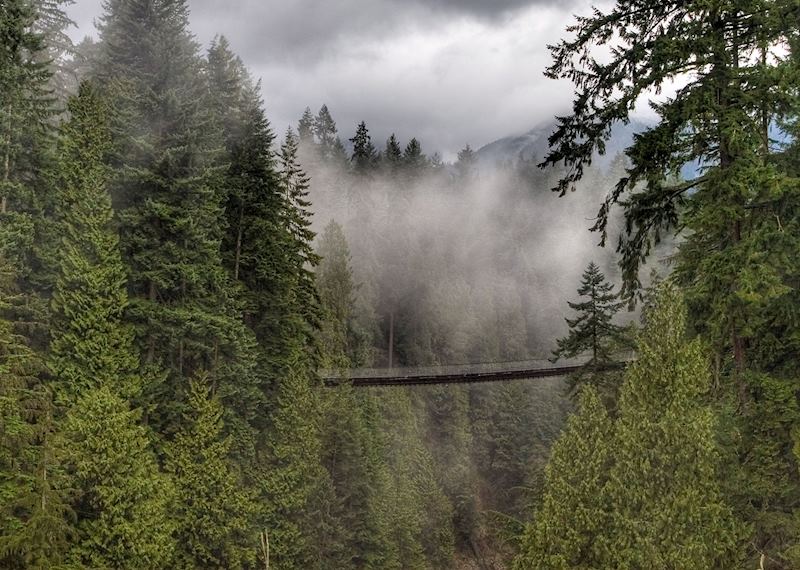
The Treetops Adventure comprises seven suspension bridges connecting centuries-old Douglas firs. From here, you can spot the tallest tree in the forest, the 61 m (200 ft) Grandma Capilano. The bridges have been designed to adjust to the trees’ growth without damaging them, by use of ‘tree collars’.
Children can take part in the Rainforest Explorers Program, looking for signs and answering questions related to the ecosystem as they explore. You’re also introduced to First Nations history and culture at the Kia’palano exhibit, which features the largest private collection of totem poles in North America.
A free shuttle bus runs between downtown Vancouver and the park throughout the year. As the park stays open until the evening, you could explore the city before visiting here in the late afternoon.
Family-friendly accommodation in Vancouver
Rosewood Hotel Georgia has an indoor pool and rooms that can fit two double beds. It also offers special equipment and services for families, including baby monitors, child-sized bathrobes and a children’s menu for in-room dining.
Wildlife-watching around Vancouver Island
After visiting Vancouver, I suggest catching a seaplane or ferry over to Vancouver Island. It’s home to British Columbia’s historic capital, Victoria, where cobbled streets and colonial architecture form a contrast to modern Vancouver.
For me, though, a visit to the island is all about experiencing the wildlife that lives among the ancient temperate rainforests and along its wild coastline.
Whale watching
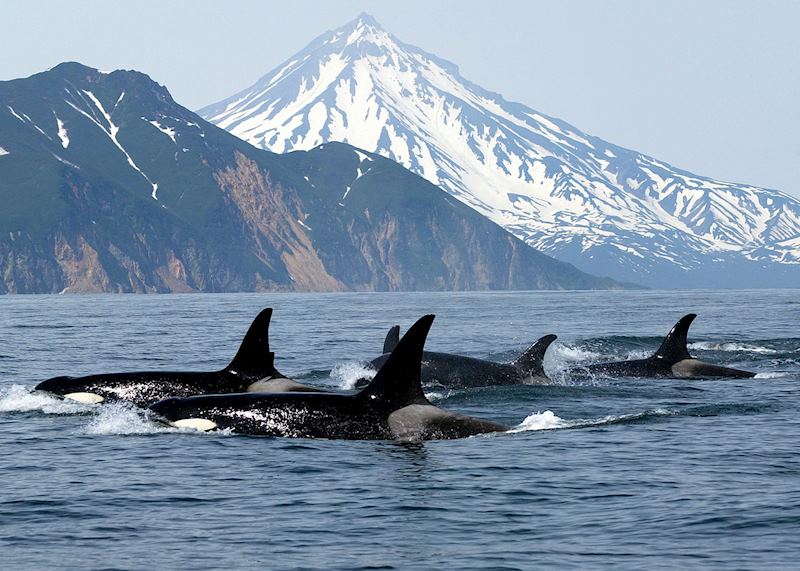
The peak whale-watching season around Vancouver Island is between June and September. However, three resident orca pods live off Victoria’s coast, so trips out to see them are possible for most of the year. You head out on a regular boat or, for an even closer view, an inflatable but robust Zodiac boat (waterproof thermal life jackets are provided).
On-board naturalist guides track and point out the orcas with impressive knowledge. Despite there being hundreds of orcas here, the guides can identify them individually by the shape of their dorsal fin. They’ll even tell you the name of each orca, which pod they belong to and how old they are.
Humpback whales migrate to the waters around the north and west of Vancouver Island between May and October to feed on krill, plankton and fish. You can take whale-watching trips to see them from Tofino.
Visit this area in March or April, and you have a good chance of seeing Pacific grey whales. Around 20,000 of them pass through here annually as they journey from their breeding grounds in Mexico to Alaska.
Bear watching
The sheltered waters surrounding Tofino are known as the Clayoquot Sound. In the early morning, between April and October, you can don a buoyant boiler suit and set out by Zodiac to search for black bears as they forage along the rocky shoreline at low tide.
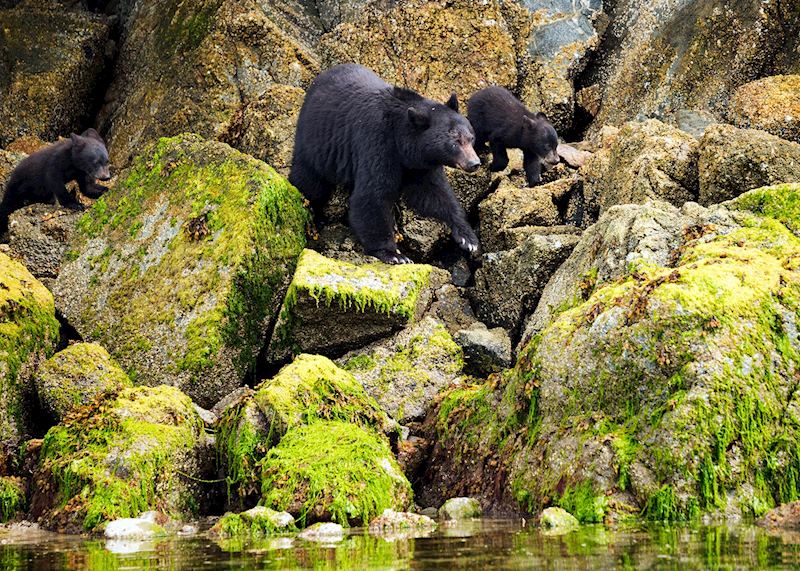
With no natural predators, the bears are completely at ease, allowing you to get within a stone’s throw without batting an eyelid. There were around ten of us on board my Zodiac, including an experienced guide, and we all became engrossed in the actions of a mother bear and her cub as she turned rocks over with her huge paws in search of shellfish. The experience of seeing wild bears at such close quarters is one I’ll never tire of recounting.
Family-friendly accommodation on Vancouver Island
Black Rock Oceanfront Resort is a 15-minute walk from the shops and restaurants of Ucluelet on the west coast. Set on rocks above the ocean and backed by forest, its spacious one- and two-bedroom suites accommodate families of up to six and feature well-equipped kitchenettes. While staying here, you can take part in a variety of activities, including hiking, kayaking and surfing.
Family holidays in the Canadian Rockies
I particularly recommend the Rockies for families with older children. The outdoor activities on offer encompass white-water rafting and kayaking on rivers and lakes, hiking through mountains, and walking on glaciers.
I suggest following a loop around the Rockies area, taking in Banff, Jasper and the Icefields Parkway, a scenic drive that connects the two towns. Halfway along the drive is the Athabasca Glacier — stop here to take a guided walk out on the ice.
Calgary
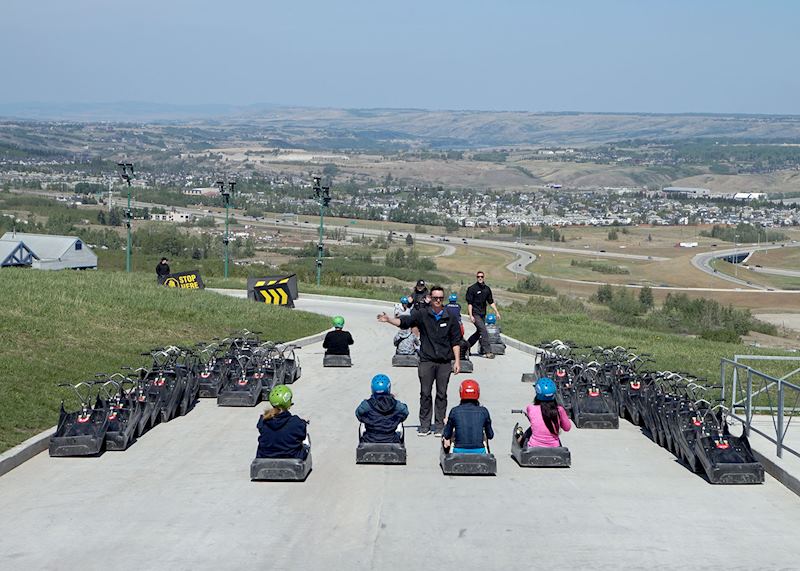
With its own airport, Calgary is a gateway to the Rockies. It’s tempting to head straight to Banff, just two hours away. However, an unexpected highlight of mine was staying in town to visit the Canada Olympic Park, which hosted the 1988 Winter Olympics and is now the WinSport Arena.
You can take part in activities here at any time of year, from ice skating and cross-country skiing in winter to zip-lining, mini golf and summer luge (similar to go-karting) in warmer months. I particularly enjoyed bobsleighing. Piloted by an experienced professional, you get a powerful rush of adrenaline as you whistle down the track at speeds of over 80 km/h (50 mph). The minimum age requirement is 14, and all safety equipment is provided.
Family-friendly accommodation in the Canadian Rockies
Cathedral Mountain Lodge offers a rustic, cabin-in-the-woods experience. It’s located just outside the quiet town of Field in Yoho National Park, down the road from Lake Louise and Banff National Park. Wooden cabins accommodate up to four people, and you can partake in activities such as guided hikes and canoe trips.
Recommended experiences for families in eastern Canada
Niagara Falls
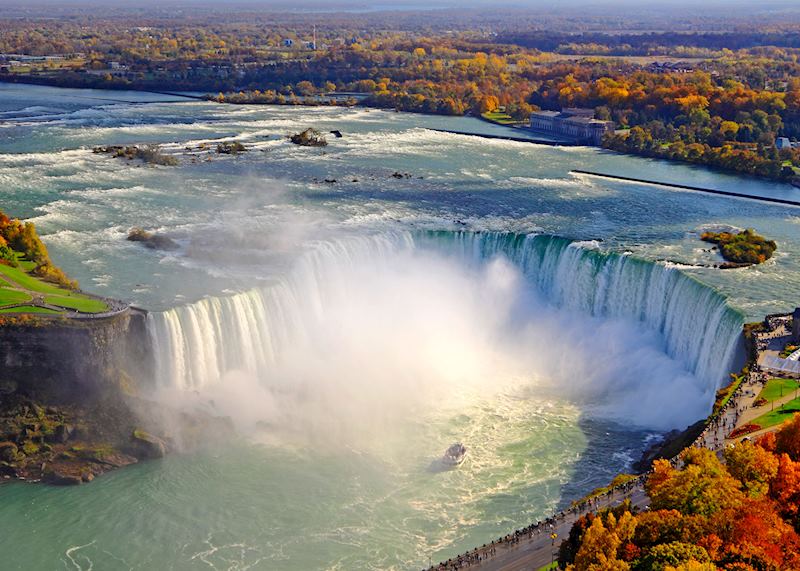
There are lots of ways to experience Niagara Falls, so it’s easy to spend a couple of days here.
For sheer proximity, I recommend boarding a Niagara City Cruise for a 20-minute trip along the Niagara River to the foot of the falls. You pass the smaller American and Bridal Veil Falls before heading right up to Horseshoe Falls’ foamy curtain of water.
The boat gets close enough for you to feel the power of the water as it thunders into the river. Its roar stays with you long after you have left. Waterproof ponchos are provided to protect you from the billows of spray. Cruises are also available in the evening, when lights illuminate the waterfalls in pink, blue and green and fireworks burst overhead.
The best experience I’ve ever had here was taking a helicopter ride over the falls. While it only lasts around ten minutes, this is the only way to take in all-encompassing bird’s-eye views over the falls, the Niagara River and its tributaries, and the rising mist. Sunlight often refracts off the water, creating rainbows. You’re also able to see the complete semi-circular shape of the Horseshoe Falls without your views being obscured by the mist.
Family-friendly accommodation in Niagara Falls
Sheraton on the Falls is a large hotel that overlooks the American and Horseshoe Falls. The modern rooms can fit two double beds, and some interconnect for larger families.
The hotel has indoor and outdoor pools. An internal walkway leads to a shared resort featuring an indoor waterpark and a variety of restaurants.
Algonquin Provincial Park

One of the oldest parks in the country, Algonquin was Ontario’s founding park, established in 1893. Just two and a half hours north of Toronto, it feels worlds away from the fast-paced city.
While Algonquin doesn’t have the mountain scenery of the Rockies, it does have far fewer visitors. You can head out on a walk through the park’s maple and fir woodlands and wildflower meadows without seeing anyone else, or canoe on one of the many lakes and hear nothing but birdsong.
You might see moose grazing by the lakes at dawn or dusk, and you should also look out for otters, white-tailed deer and mink. The area also has a black bear population, but is best-known for its wolves. Park authorities have conducted wolf research here since the 1950s. If you’re visiting in August you can join one of the park’s communal ‘wolf howl’ sessions — with the help of a park ranger you can listen for the mournful reply of not-too-distant wolves.
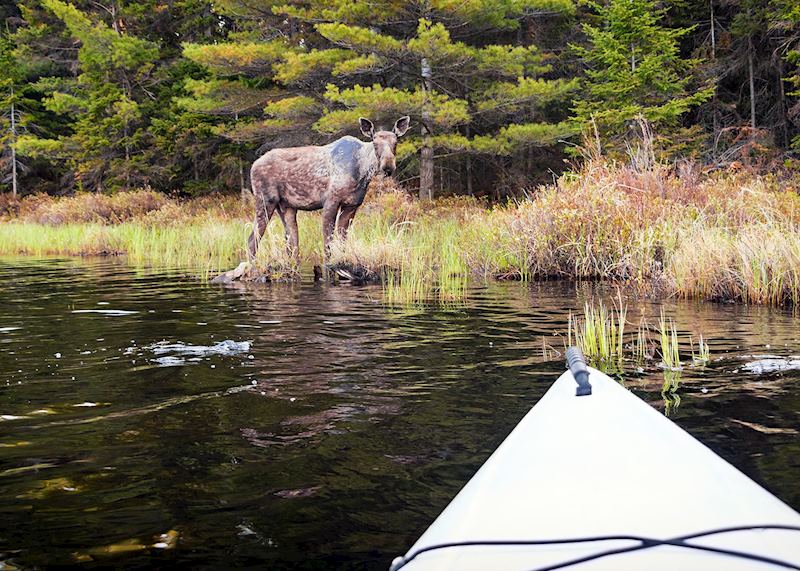
Family-friendly accommodation in Algonquin National Park
Killarney Lodge offers rustic but comfortable one- and two-bedroom cabins set beside the Lake of Two Rivers. Each cabin comes with a canoe you can take out on the lake. Family-run, the lodge serves hearty home-cooked food and provides packed lunches each day.
Eating with your family in Canada
You’ll find a wide range of food choices throughout Canada, particularly in the cities. Hotels usually have their own restaurants and many offer accommodation with small kitchens, should you wish to cook for yourselves.
Canada generally caters well for vegetarians and special dietary requirements, though less so in more rural areas.
Best time to visit Canada with your family
Outside school time, July and August are the best months to visit, for the warm weather and wildlife-spotting. It can get very busy, so we recommend booking well in advance.
Start planning your family trip to Canada
Start thinking about your experience. These itineraries are simply suggestions for how you could enjoy some of the same experiences as our specialists. They’re just for inspiration, because your trip will be created around your particular tastes.
View All Tours in Canada
